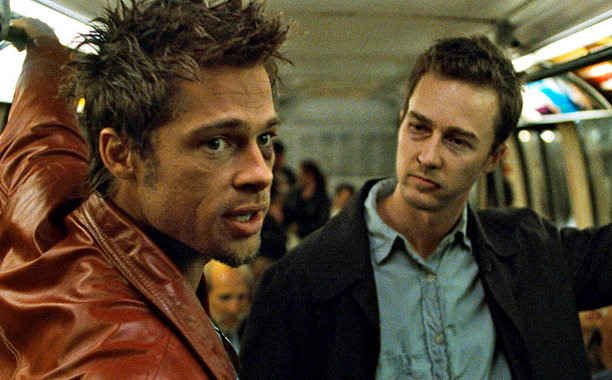
You know that feeling you get when you watch a movie or even a simple scene that is so cool and badass that the hairs on the back of your head just stand up? When you watch John Wick dispatch an horde of thugs with one handgun; when you see Dan Stevens calmly knocking out rowdy bullies in The Guest?
Well, that is what a legitimately cool movie will do to you. Granted, it may be hard to pinpoint the specifics that transform an ordinary film into a certified cool one. We could argue it’s a mix between visual style and character behavior. But it really could be myriad of other factors. Truth is, we know a cool movie when we see one and that’s good enough for most of us.
So without further ado, here are some of the coolest films of all time:
10. The Matrix

Every decade has a handful of movies that become almost intrinsically bonded to that time. These are usually the films that really mark a generation; that come along and turn into pop culture icons. The 90’s were filled to the brink with those types of movie – think Fight Club, for instance, or even The Big Lebowski as prime examples. But if one were to choose what is undeniably the most important and down-right kickass sci-fi of the 1990’s one would have to turn to The Matrix.
A crazy ambitious and philosophical sci-fi-martial arts mash-up, The Matrix follows Neo, the chosen one, as he discovers that reality is but a computer program created by machines to keep humans dazed and obedient while their bodies are drained for energy.
Add to that the now iconic figure of the agents – especially one of the most famous villains in film lore, Agent Smith -, programs designed to persecute and eliminate humans who have woken from the matrix, and you got yourself one hell of a premise for a great film.
The Matrix may feel a bit dated, that’s a given. The flip phones were bound to go out of fashion eventually. But digressions apart, The Matrix is a movie that blew everyone away when it first came out. It’s Plato’s cavern theory meets William Gibson’s Neuromancer meets martial arts extravaganza. The characters are constantly dressed in leather overcoats, almost always rocking some stylish sunglasses while shooting the world to pieces, karate chopping bad guys and dodging bullets left and right.
It is also important to praise the seminal special effects concocted for this movie, especially the now-infamous-for-it-being-so-overutilized-in-the-wake-of-this-film’s-mammoth-success bullet time effect used in the scene Neo leans back to the floor and narrowly dodges the bullets an agent is trying to kill him with.
All in all, The Matrix is a smart, frenetic, balls to the wall actioner brilliantly directed by the Wachowski sisters. It sits high up in the class of best sci-fi films ever put to screen, except this one features Keanu Reeves downloading jiu-jitsu into his brain. It’s awesome.
9. Pulp Fiction
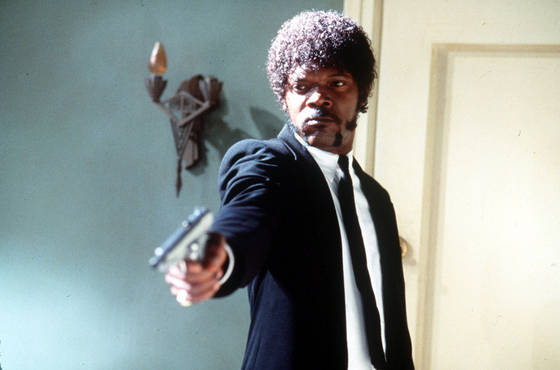
Remember those movies that put a dent on the generation of moviegoers and film lovers in the 90’s? Well, The Matrix certainly impressed them with its striking visuals and unforgettable set pieces but it was another small film that made them leave the theater instantly quoting and loving every single character in that movie. Well, maybe apart from Honey Bunny.
Pulp Fiction has got to be one of the most iconic films of all time. It was pretty much the movie that made Quentin Tarantino a household name to anyone even slightly interested in cinema, and from one viewing alone you can see why. The dialogues are fresh and snarky, flowing beautifully from line to line and scene to scene.
The performances are all career best for its main actors and the plot is incredibly constructed, which lends further weight to the film’s shocking but hilarious twists and turns. The timeline is purposefully disjointed and the movie steers away from the classic good-guy-vs-bad-guy dynamics. Every character is after something, and that occasionally pits them against each other.
What made Pulp Fiction really stand out from countless other crime films was how utterly original it was. A fresh take into an already maligned and repetitive genre that managed to breathe new life not only into mafia/crime movies but into American cinema as a whole.
In here, the characters don’t discuss step by step of their criminal endeavors and plans as they make their way to kill or extort someone. Instead, they talk about foot massages and the metric system in European Mcdonald’s. Vincent Vega doesn’t have to just show up and shoot people; he also has to take his boss’ wife out on a date, during which there is unbearable sexual tension. The characters make mistakes they have to fix, and thus their timelines go back and forth and intertwine or are even cut short.
Basically, if you’re looking for a fresh, funny, instantly quotable and perfectly balanced film (that runs 150 minutes long, mind you, but never drags or rushes), there is no better option than Pulp Fiction.
8. Breathless
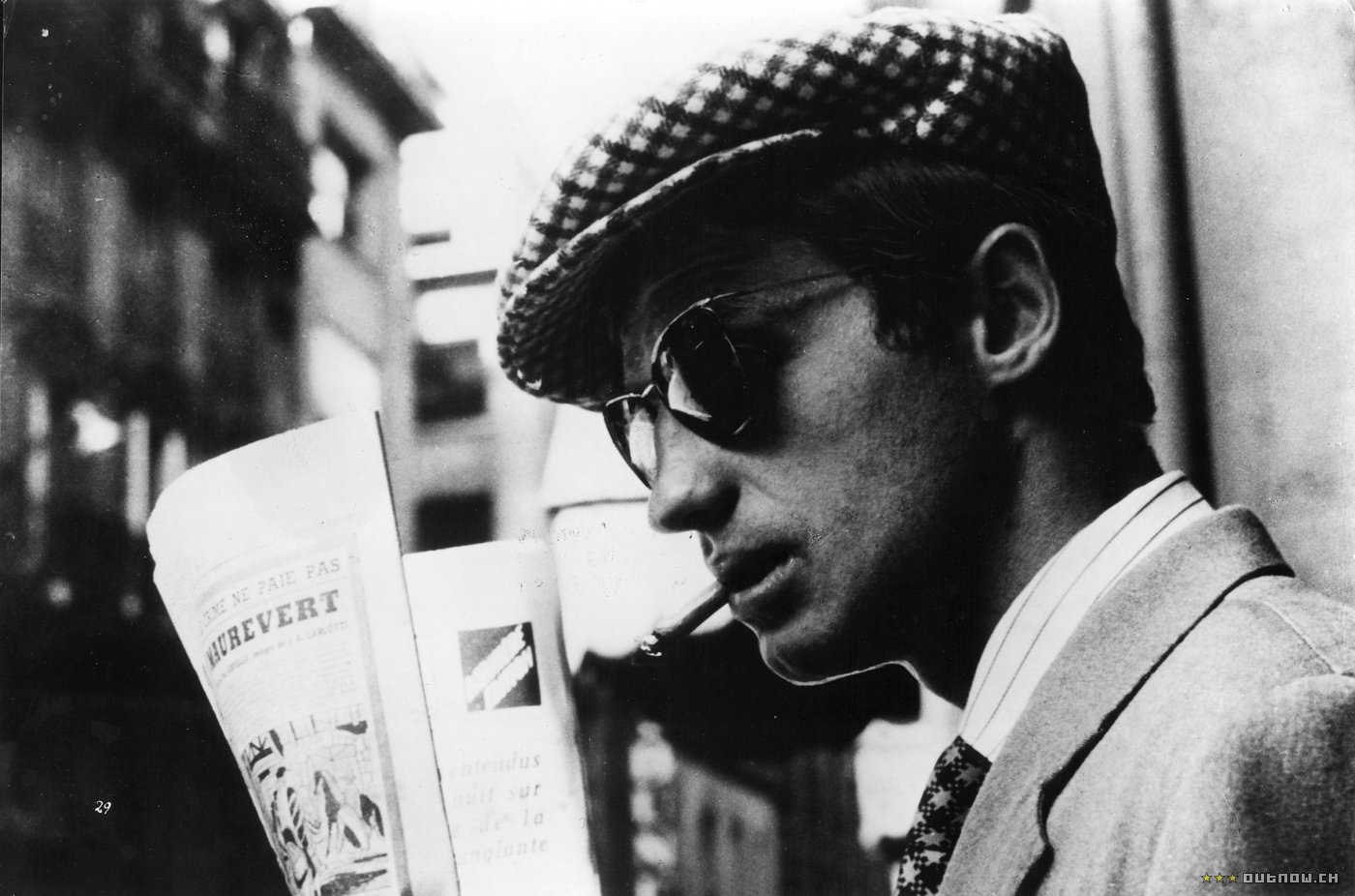
To the other side of the Atlantic Ocean we turn, drawing our gazes to a seminal film in world cinema, and one of the most renowned entries into the Nouvelle Vague. Yes, it may be French, experimental and artsy but that doesn’t stop Jean-Luc Godard’s Breathless from being effortlessly cool.
Recognized for its bold visuals and the somewhat confusing moral ambiguity of its main characters, Breathless follows Michel, a petty thief obsessed with the persona of Humphrey Bogart (by himself already one of the coolest and most suave leading men of all time), and who begins an affair with an American student in Paris. A simple – and perhaps even unattractive plot – turns into one of the most influential films of all time at the hands of a very young Godard, who constantly surprises with his unconventional choices.
Before delving into the characters, it is impossible not to comment on the movie’s visual allure. Frantic and energetic, its daring way of using jump cuts drew much attention at the time of its release. Breathless often utilizes jump cuts inside a scene, cutting dialogues short in snappy fashion.
The iconic scene with Michel and Patricia in the car serves as a prominent example. Godard’s penchant for hand-held shots and atypical angles also adds plenty to the film’s archetypal aesthetics.
Now onto the characters, as promised. Jean-Paul Belmondo was as cool as it gets in 1960’s France. With his everyday appeal, non-Hollywoodian features and smoothing charm, he was the perfect antidote to the heroes so commonly portrayed in screens at the time. Well dressed in nice suits and always smoking – he’s French after all -, Belmondo was the epitome of European cool.
So was Jean Seberg, with whom he shares so many scenes. Sporting short hair and a style of her own, it’s no surprise Seberg in Breathless is still regarded as a fashion icon, inspiring many a generation of young girls and women to dress cool and be cool.
7. Drive
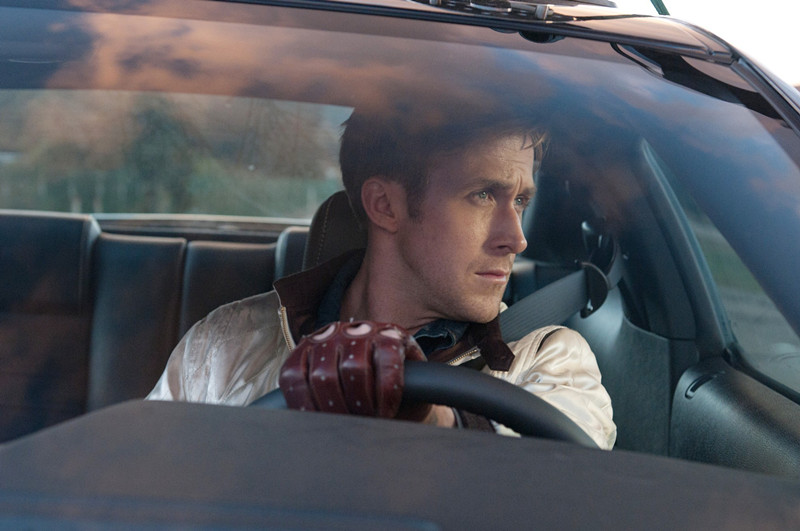
From the French cool of the 1960’s we hop forwards in time to the contemporary cool only one creative duo can conjure: that’s right, it’s Ryan Gosling and Nicolas Winding Refn serving up what is arguably one of the uber cool films of the 21st century, Drive.
Drive is a simple film. It follows Gosling’s unnamed driver – a mechanic and stunt movie pilot who also moonlights as a criminal getaway driver – as he falls for his new neighbor and gets caught up in the aim of mobsters after a job goes wrong. As in typical Refn fashion, it all descends to a festival of gruesome hyper-stylized violence.
Drive is a film dripping with mood and style, although it might be hard to pinpoint exactly what it is that makes it so unique and atmospheric. Is it the neon lights and lamp post lighting in the night scenes? Cliff Martinez’s electronical score, led by brass and synthesizers? Ryan Gosling sulking and mysterious smooth talking character, who barely speaks but is still so irresistibly cool with the toothpick in his mouth, scorpion jacket on his back and sudden bursts of threats and violence?
Maybe it’s all of those combined into one, maybe some factors weigh in more than others. Who knows? All that’s obvious is that Drive is a film so effectively moody and so goddamn cool that it will make you want to get a hammer and bullet, and put on a scorpion jacket before you go wreak havoc on some unsuspicious low-life mobsters at the backstage of a strip club. Just how cool is that?!
6. The Good, The Bad and The Ugly
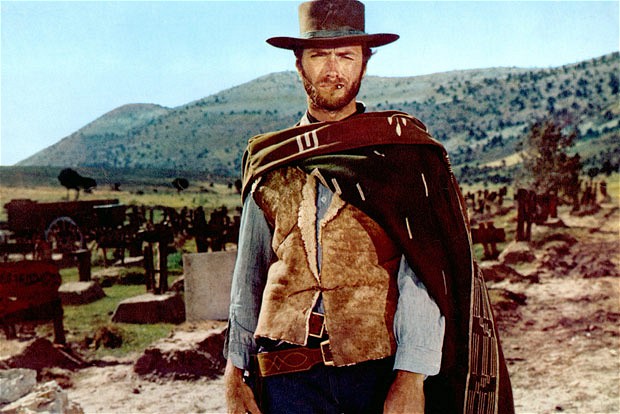
“There are two types of people in this world, my friend: those with loaded guns, and those who dig. You dig.”
The concept of a cool movie isn’t exactly tied to any particular genre in fiction. This list alone has presented prime examples of kickass movies ranging from philosophical sci-fi action flicks to experimental French films from the 1960’s. All these movies have their fair share of remarkably suave characters, but if you’re searching for “cool” then you need look no further than gun-slinging Clint Eastwood in The Good, The Bad and The Ugly.
Sergio Leone’s spaghetti westerns cemented Eastwood’s eternal reputation as cinema’s greatest badass. No one can rock a poncho and gun holster like Eastwood did; it’s scientifically impossible. Whenever his western persona would show up on screen – be it in Leone’s masterpieces or even in Eastwood’s own directorial forays into the genre -, he would light up the room and immediately steal everyone’s attention. His furrowed brow and only the tail end of a cigar popping out of his sun scorched mouth is now become synonym with “really damn cool”.
But it would be unfair to Leone to say that Eastwood is the sole reason The Good… is such a cool movie. A lot of it also resides on Leone’s immense vision and talent, as he could conjure atmosphere like few others before or after. His character’s suave one liners were a thing of beauty, as was his eye for amazing imagery, and the unbearable tension he could get from editing alone – think the iconic three-way duel at the end – is nothing short of genius.
And who could forget Eli Wallach and Lee Van Cleef in this film? Van Cleef has got to be one of the toughest and most awesome bastards ever to grace a movie screen, and is often sadly left out of people’s minds when the subject of cool characters pops up in a conversation. You put Eastwood’s poncho next to Van Cleef’s all black outfit (not to mention his menacing grim) and Wallach’s rough twitchy character and you got yourself a film lover’s paradise.